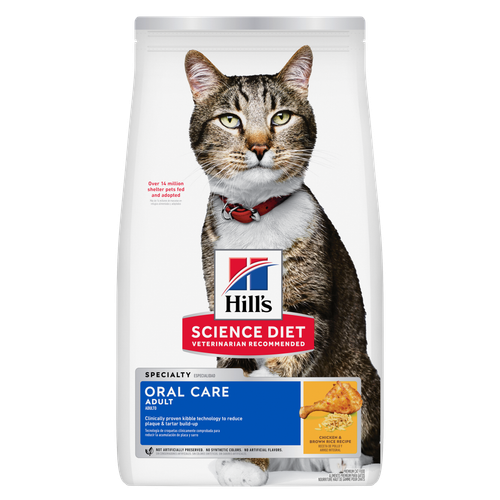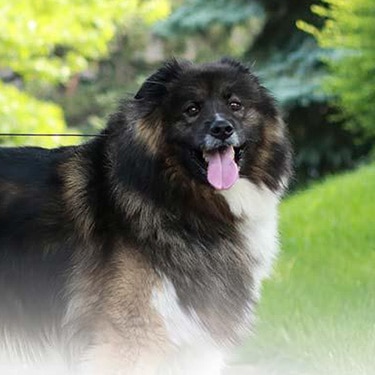
-
Find the right food for your petTake this quiz to see which food may be the best for your furry friend.Find the right food for your petTake this quiz to see which food may be the best for your furry friend.Health CategoryFeatured products
 Adult Large Breed Chicken & Barley Recipe Dog Food
Adult Large Breed Chicken & Barley Recipe Dog FoodSupports healthy joints, lean muscle, and beautiful coat for large breed dogs
Shop Now Adult Light Large Breed Chicken Meal & Barley Recipe Dog Food
Adult Light Large Breed Chicken Meal & Barley Recipe Dog FoodFewer calories for less active large breed dogs
Shop Now Hill's Science Diet Adult Healthy Mobility Large Breed Chicken Meal, Barley & Brown Rice Recipe Dog Food
Hill's Science Diet Adult Healthy Mobility Large Breed Chicken Meal, Barley & Brown Rice Recipe Dog FoodAdvanced nutrition shown to support joint health and improve mobility
Shop NowFeatured products Adult Perfect Digestion Chicken, Barley & Whole Oats Recipe Cat Food
Adult Perfect Digestion Chicken, Barley & Whole Oats Recipe Cat FoodHill's Science Diet's breakthrough nutrition supports ultimate digestive well-being & healthy microbiome
Shop Now Adult Sensitive Stomach & Skin Pouch Variety 12 Pack Cat Food, Chicken & Beef, Salmon & Tuna
Adult Sensitive Stomach & Skin Pouch Variety 12 Pack Cat Food, Chicken & Beef, Salmon & TunaCarefully made, gourmet daily nutrition. Tasty chunks with Salmon & Tuna in a decadent gravy. Supports digestive health, nourishes skin and promotes a lustrous fur.
Shop Now Adult Oral Care Chicken & Brown Rice Recipe Cat Food
Adult Oral Care Chicken & Brown Rice Recipe Cat FoodClinically proven kibble technology to reduce plaque & tartar build-up
Shop Now -
DogCat
- Cat Tips & Articles
-
Health Category
- Weight
- Skin & Food Sensitivities
- Urinary
- Digestive
- Kidney
- Dental
- Serious Illness
-
Life Stage
- Kitten Nutrition
- Adult Nutrition
Featured articles Adopting a Pet: What You Need to Know
Adopting a Pet: What You Need to KnowLearn the basics of adopting a pet, including where to begin and common questions you should ask yourself when deciding which kind of pet is best for you.
Read More Fun Ideas for Kids and Pets This Summer
Fun Ideas for Kids and Pets This SummerOutdoor summer activities with your dog or cat can be fun for kids, too. Learn how they also teach kids responsibility & creates a bond with their pet.
Read More Cat vs. Dog: Which Is the Best Pet for Me?
Cat vs. Dog: Which Is the Best Pet for Me?Learn about important differences between dogs and cats, such as cost & space considerations. These factors can help you decide which pet is best for you.
Read More -


Can dogs get warts?
Dogs warts, not dissimilar to those seen in people, are relatively common in young dogs. However, most of the bumps that we think of as "warts" on the skin of older dogs are technically not warts at all. Nevertheless, they're commonly referred to as "warts" by veterinarians and pet parents alike. Here are more details about wart-like bumps as well as true dog warts.
What Is a Wart? (& Can Dogs Get Warts?)
A true wart is a virus-induced proliferation of superficial skin cells technically referred to as a viral papilloma. As with human warts, warts grow when a virus gets into the cells of the skin and change how the skin tissue grows, resulting in an unsightly bump.
Dog warts sometimes fall into the category better known as "wart-like," which means they're not virus-related but still look every bit like a wart. These bumps are exceedingly common in older dogs. They are proliferative skin masses that can grow anywhere on the skin and are typically no larger than the size of a pea. They are usually hairless and firm, but sometimes they exude waxy debris or even bleed.

What Causes a Dog Wart?
True dog warts occur in conjunction with papillomavirus infections, they are typically found in young dogs and most commonly in the mouth or around the face or genitals. Dogs are often infected after directly or indirectly coming in contact with other dogs in their community. To distinguish these bumps from other wart-like masses, veterinarians refer to them as viral papillomas.
The cause of most wart-like masses seen in dogs is less clear, but the vast majority are considered sebaceous gland growths. Excessive division occurs in cells of the sebaceous glands of the skin and this leads to growth in a wart-like pattern. Thankfully, these growths are almost always benign.
A variety of wart-like, sebaceous gland growths are seen in dogs. Nodular sebaceous hyperplasia is the most common. They are typically round or cauliflower-shaped and may or may not ooze or bleed. These growths are seen most often in breeds such as Cocker spaniels, Miniature poodles, Miniature schnauzers and Beagles but can occur in any dog. Other forms of sebaceous gland growths include what are technically considered tumour another word for cancer. These include the sebaceous epithelioma, sebaceous adenoma and sebaceous carcinoma. This latter category is a malignant cancer, which is rare as it only occurs in about 2% of sebaceous tumour.
Dogs of all ages can get true warts or wart-like masses, but the rule of thumb is that young dogs get viral papillomas while old dogs get wart-like masses that are classified as either nodular sebaceous hyperplasia or sebaceous tumours.
RECOMMENDED FOR YOU:
Dog Skin Conditions Read More


Tasty Tips
Are Warts Harmful to Dogs?
Warts are generally considered a minor concern in dogs. While young dogs with viral papillomas may not enjoy having strange proliferative tissue in their mouths or having to forgo the dog park so that they don't transmit their warts to others, the warts are not considered painful. Some extreme cases, however, may include oral discomfort from an excess of proliferative tissue that may lead to rubbing or superficial erosion.

Similarly, older dogs with wart-like growths tend to experience no discomfort, even when these areas bleed. Some extreme cases may lead to uncomfortable skin infections and rarely to cancer. Otherwise, these growths are largely considered a cosmetic concern. Even when cancer becomes a concern, most patients will respond well to surgical removal. These tumours do not tend to spread to other tissues of the body. Your veterinarian can give you advice about your pet's bump and guide you on the best treatment.
Canine viral papillomas (true dog warts) are considered highly transmissible among young dogs; older dogs are more resistant to infection. But, you don't have to worry that your dog will give you a wart. Neither humans nor other animals are ever at risk — this virus is very specific to dogs. Moreover, sebaceous gland wart-like masses are specific to the individual animal alone; they are never contagious or transmissible.
How Are Dog Warts Treated?
Canine viral papillomas require no specific treatment. They will regress on their own in a few weeks to months. Since they're considered a significant nuisance by many dog parents, many treatments have been tried — most to no avail. Antiviral drugs and surgery may do more harm than good. However, consultation with your veterinarian is recommended and they can remove it or, if necessary, they will refer you to a board-certified dermatologist or veterinary surgeon for removal.
Since they are largely considered a cosmetic problem, wart-like growths in older dogs may not need treatment, but exceptions are often made, especially if the growth is growing quickly. Further, if they should bleed, become infected, become a nuisance for groomers or interfere with bodily functions, pet parents often elect to have them removed. Removing a wart or wart-like mass is only helpful if it serves the dog's overall quality of life, and you should seek out the advice of your veterinarian to ensure that removal is the best option. That said, should the wart be considered a significant cancer threat, removal with full microscopic examination analysis is strongly recommended. Thankfully, removal is a fairly simple procedure in most cases.
Unfortunately, dog warts can only be prevented in the case of viral papillomas. Even so, preventing papillomavirus infection is only feasible by limiting a dog's interaction with other dogs, which may not be advisable. No vaccine is currently available.
For older dogs at risk of sebaceous growths, no means of prevention has been definitively identified. Keeping dogs' skin and coat consistently clean is nonetheless considered helpful for those deemed predisposed and have your veterinarian regularly examine any new lumps or bumps that may arise.


Dr. Patty Khuly is an award-winning veterinarian known for her independent thinking, her spirited pet advocacy, her passion for the veterinary profession, and her famously irreverent pet health writing.
Dr. K is an honors graduate of both Wellesley College and the University of Pennsylvania School of Veterinary Medicine. She received her MBA at The Wharton School of Business as part of the prestigious VMD/MBA dual-degree program. She now owns Sunset Animal Clinic, a veterinary practice in Miami, Florida.
Related products

Fewer calories for less active large breed dogs

Supports healthy joints, lean muscle, and beautiful coat for large breed dogs

Advanced nutrition shown to support joint health and improve mobility

Fewer calories for less active dogs
Related articles

Though it may seem like your four-legged friend loves nothing more than to nap on the couch, dogs need regular exercise to stay healthy just like people do.

A little exercise can make a big difference. Not only will it enhance your pet’s health, but it will beef up your relationship as well.

Learn how to stop your dog from begging at the dinner table, and understand how it can help contribute to his health.

Learn about choosing the right dog food to help ensure your mature older dog will receive the correct balance of nutrition.

Put your dog on a diet without them knowing
Our low calorie formula helps you control your dog's weight. It's packed with high-quality protein for building lean muscles, and made with purposeful ingredients for a flavorful, nutritious meal. Clinically proven antioxidants, Vitamin C+E, help promote a healthy immune system.
Put your dog on a diet without them knowing
Our low calorie formula helps you control your dog's weight. It's packed with high-quality protein for building lean muscles, and made with purposeful ingredients for a flavorful, nutritious meal. Clinically proven antioxidants, Vitamin C+E, help promote a healthy immune system.

